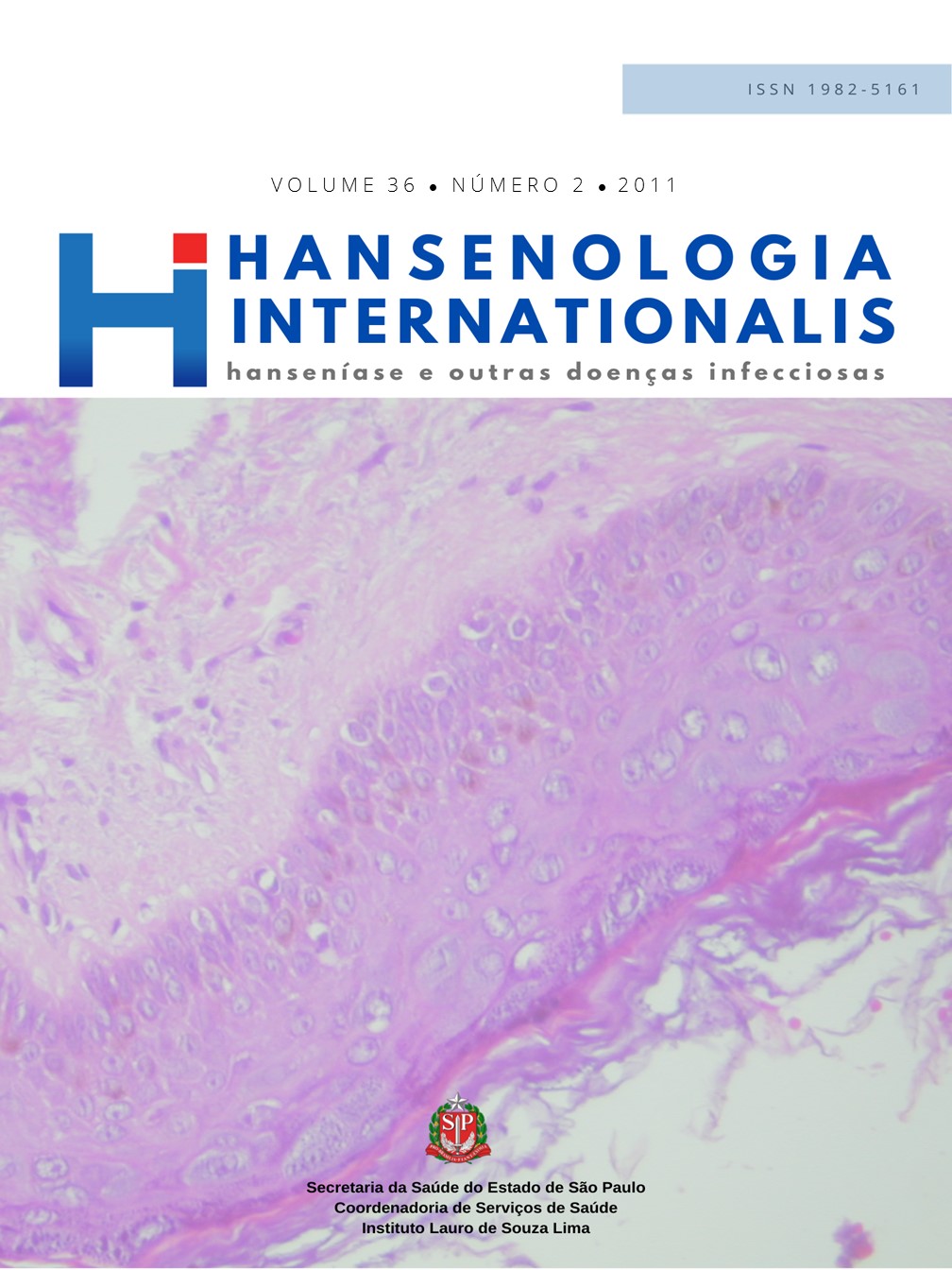Abstract
OBJECTIVE: Knowing the nutritional status and eating perception of residents with leprosy sequel. METHODS: The evaluated population consisted of 40 former leprosy residents . To determine the nutritional status the BMI (Body Mass Index) for adults was used according to WHO (Wolrd Health Organization) , 1995 and 1997 for assessment of food intake (protein and calories) the eating record of 2 days. To determine the eating perception a questionnaire was applied with 15 residents that were keeping productive contact. Data were tabulated and analyzed using Software SPSS for Windows® version 17.0. RESULTS: 3 (7,5%) residents presented nutritional diagnosis of thinness level I ; 4 (10%) thinness level II; 2 (5%) thinness level III; 23 (57,5%) eutrophic; 6 (15%) pre obesity; and 2 (5%) residents with nutritional diagnosis of obesity level I . It was observed that the sum of resindents (25) with caloric adequacy over 110% and below 90% was superior than the number of residents (15) with caloric adequacy from 90 to 110% . The average percentage of proteic adequacy of 131,2 % . Regarding eating perception it was observed that 4(26,7%) have perception that they do not eat well; 13(86,7%) answered that their diet is enough; 8(53,3%) like the food offered in the institution; 9 (60%) eat exclusively the meals offered in the institution; 9(60%) not like to chew the food; 6(40,0%) like to be alone during meals. CONCLUSION: The results showed a worrying situation of nutritional risk. The association among the perceptions deserve to be valued by the health team and responsible for feeding. This knowledge could generate greater acceptance to the food offered. It is indispensable assistance aimed to minimize the marks, suffering and rejection left by the social stigma associated with leprosy.
References
2 Bassoli, Sidinéia Raquel Bazalia et al. Identificação dos diagnósticos de enfermagem mais freqüente em pacientes afetados pela hanseníase. Hansenologia Internatinalis. 2007; 32 (2): 175-184.
3 Brasil, Ministério da Saúde. Secretaria Nacional de Programas Especiais de Saúde. Divisão Nacional de Dermatologia Sanitária. Controle de hanseníase: uma proposta de integração ensino – serviço, Rio de janeiro, 1989.
4 Canicoba, M. Evalución Del estado nutricional de pacientes em um hospital com lepra em Argentina. Nutr. Hosp. 2007; 22(3): 377-81.
5 Goffman E. Estigma: notas sobre a manipulação da identidade deteriorada. Rio de Janeiro. LTC, 1988.
6 Kazapi, IM, Di Pietro PF, Avancini SRP, Tramonte VLCG. Consumo de energia e macronutrientes por adolescentes de escolas públicas e privadas. Rev.Nutr.2001; 14(1): 27-33.
7 Mattos DM, Fornazari SK. A lepra no Brasil: representações e práticas de poder. Cadernos de ética e Filosofia Política. 2005; 6(1): 45-57.
8 MORHAN – Movimento de Reintegração das Pessoas Atingidas pela Hanseníase/ Núcleo Betim, Colônia Santa Izabel do estigma à socialização. Betim (MG): MORHAN; 2006.
9 OH,Se-Young et al. Dietary habits, food intake and functional outcomes in those with a history of hansen’s disease in Korea. International Journal of Leprosy.1998; 66(1):.34-42.
10 Oliveira Ramon José et al. A via sacra da história de Veganin. Revista Bras Enfermagem. 2008; 61: 676-81.
11 Rauen MS, Moreira EAM, Calvo MCM, Lobo AS. Avaliação nutricional de idosos institucionalizados. Rev.Nutr.2008; 21(3): 303-10.
12 Rouquayrol MZ, Almeida N. Epidemiologia e Saúde. Rio de Janeiro: Medsi, 2003.p 708.
13 Santelle Odete et al. Alimentação institucionalizada e suas representações sociais entre moradores de instituições de longa permanência para idosos em São Paulo, Brasil. Cad. Saúde Pública. 2007; 23 (12): 3061-65.
14 Silva, Regina Célia Pinheiro et al .História de vida e trabalho de pessoas atingidas pela hanseníase em Serviços de Saúde do Estado do Estado de São Paulo. Hansenologia Internatinalis. 2008; 33(1): 9-18.
15 Tavares EL, Anjos LA. Perfil antropométrico da população idosa brasileira. Resultados da Pesquisa Nacional sobre Saúde e Nutrição. Cad. Saúde Pública. 1999; 15(4): 759-768.

This work is licensed under a Creative Commons Attribution 4.0 International License.
